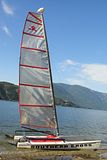|
All times are UTC - 8 hours [ DST ] |
 
|
Page 1 of 5 |
[ 69 posts ] | Go to page 1, 2, 3, 4, 5 Next |
|
| Author | Message | ||
|---|---|---|---|
| christerljung |
|
||
Joined: Sat Nov 14, 2015 1:42 pm Posts: 26 |
|||
| Top | |
||
| srm |
|
||||
Joined: Mon May 09, 2005 10:25 am Posts: 4287 Location: Jersey Shore |
|
||||
| Top | |
||||
| PrMoon |
|
||||
Joined: Thu Aug 06, 2015 12:01 pm Posts: 14 Location: Omaha, Nebraska |
|
||||
| Top | |
||||
| jackB |
|
||||
Joined: Mon Sep 12, 2011 7:28 pm Posts: 265 Location: BC, Canada |
|
||||
| Top | |
||||
| raisehull |
|
||||
Joined: Mon Apr 29, 2013 1:11 pm Posts: 151 |
|
||||
| Top | |
||||
| srm |
|
||||
Joined: Mon May 09, 2005 10:25 am Posts: 4287 Location: Jersey Shore |
|
||||
| Top | |
||||
| christerljung |
|
||||
Joined: Sat Nov 14, 2015 1:42 pm Posts: 26 |
|
||||
| Top | |
||||
| srm |
|
||||
Joined: Mon May 09, 2005 10:25 am Posts: 4287 Location: Jersey Shore |
|
||||
| Top | |
||||
| christerljung |
|
||||
Joined: Sat Nov 14, 2015 1:42 pm Posts: 26 |
|
||||
| Top | |
||||
| srm |
|
||||
Joined: Mon May 09, 2005 10:25 am Posts: 4287 Location: Jersey Shore |
|
||||
| Top | |
||||
| christerljung |
|
||||
Joined: Sat Nov 14, 2015 1:42 pm Posts: 26 |
|
||||
| Top | |
||||
| Hammond |
|
||||
Joined: Sat Jul 02, 2005 9:47 pm Posts: 614 Location: San Diego |
|
||||
| Top | |
||||
| Hammond |
|
||||
Joined: Sat Jul 02, 2005 9:47 pm Posts: 614 Location: San Diego |
|
||||
| Top | |
||||
| srm |
|
||||
Joined: Mon May 09, 2005 10:25 am Posts: 4287 Location: Jersey Shore |
|
||||
| Top | |
||||
| christerljung |
|
||||
Joined: Sat Nov 14, 2015 1:42 pm Posts: 26 |
|
||||
| Top | |
||||
 
|
Page 1 of 5 |
[ 69 posts ] | Go to page 1, 2, 3, 4, 5 Next |
|
All times are UTC - 8 hours [ DST ] |
Who is online |
Users browsing this forum: No registered users and 2 guests |
| You cannot post new topics in this forum You cannot reply to topics in this forum You cannot edit your posts in this forum You cannot delete your posts in this forum |














